Louvres, those often-overlooked architectural elements, are experiencing a design renaissance. Once primarily functional, providing shade and ventilation, they are now being re-imagined as expressive tools that shape light, enhance privacy, and contribute to sustainable building practices. This exploration delves into three diverse projects where louvres play a central role, showcasing their versatility and enduring appeal in modern architecture. Each project uniquely demonstrates the louvre’s ability to adapt to specific environmental conditions and design objectives, creating compelling and environmentally conscious spaces.
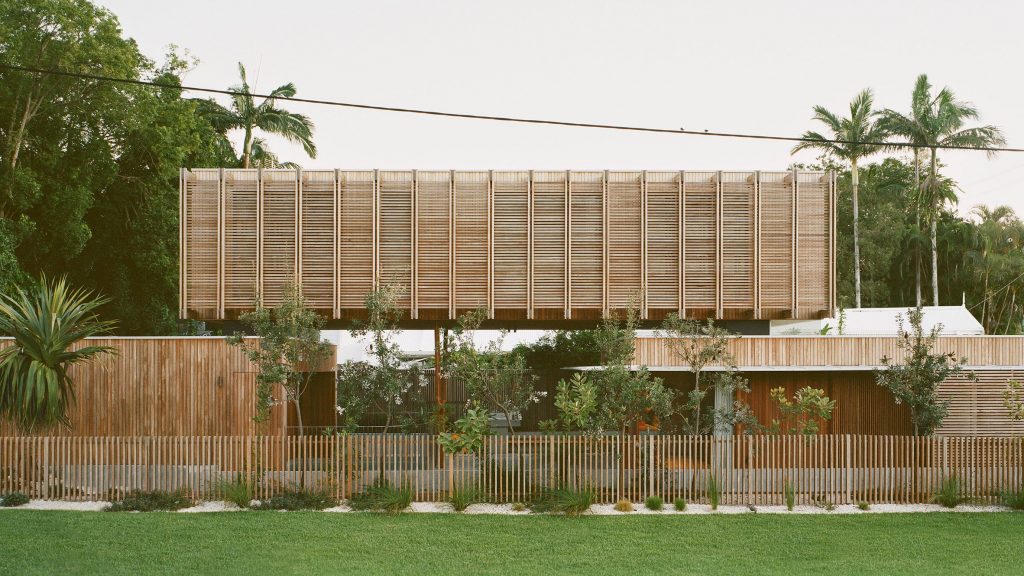
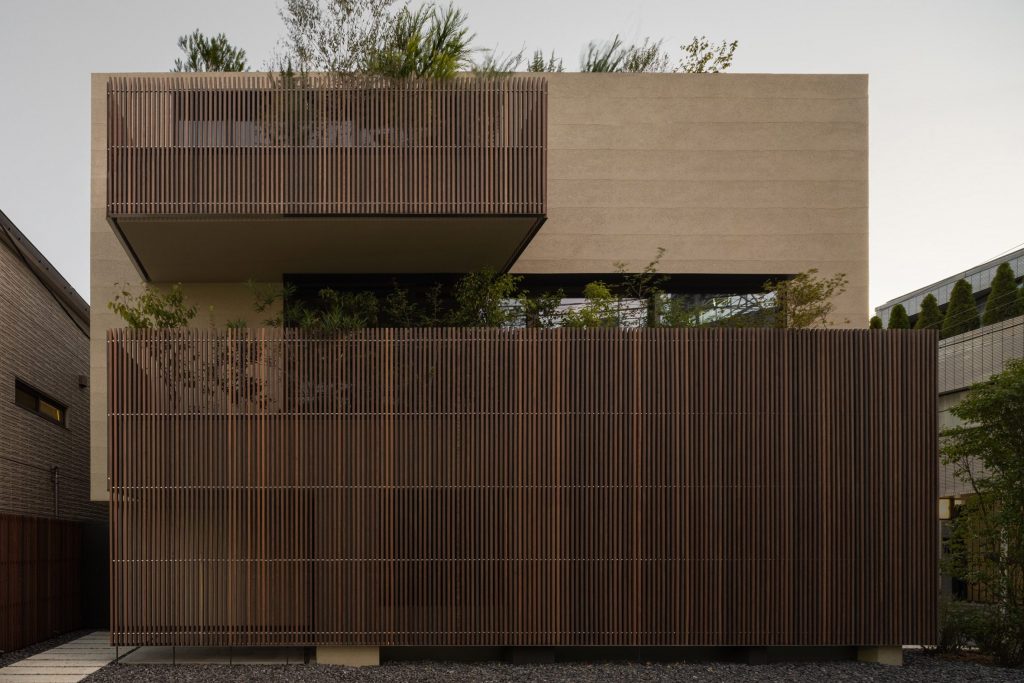
House in Aoyama by Keiji Ashizawa
Japanese architect Keiji Ashizawa’s House in Aoyama in Tokyo stands as a testament to the enduring influence of traditional design principles in modern urban environments. Facing the challenges of a busy intersection, Ashizawa sought to create a sanctuary for a family within the bustling cityscape. The chosen material, concrete, provided a foundation for privacy, but it was the thoughtful incorporation of wooden louvres that truly transformed the space into a haven of tranquility. Referencing the townhouses of Kyoto, Ashizawa implemented tall wooden louvres to gracefully shade the entrance and balcony, shielding the occupants from the intrusive gaze of neighbors and passersby.
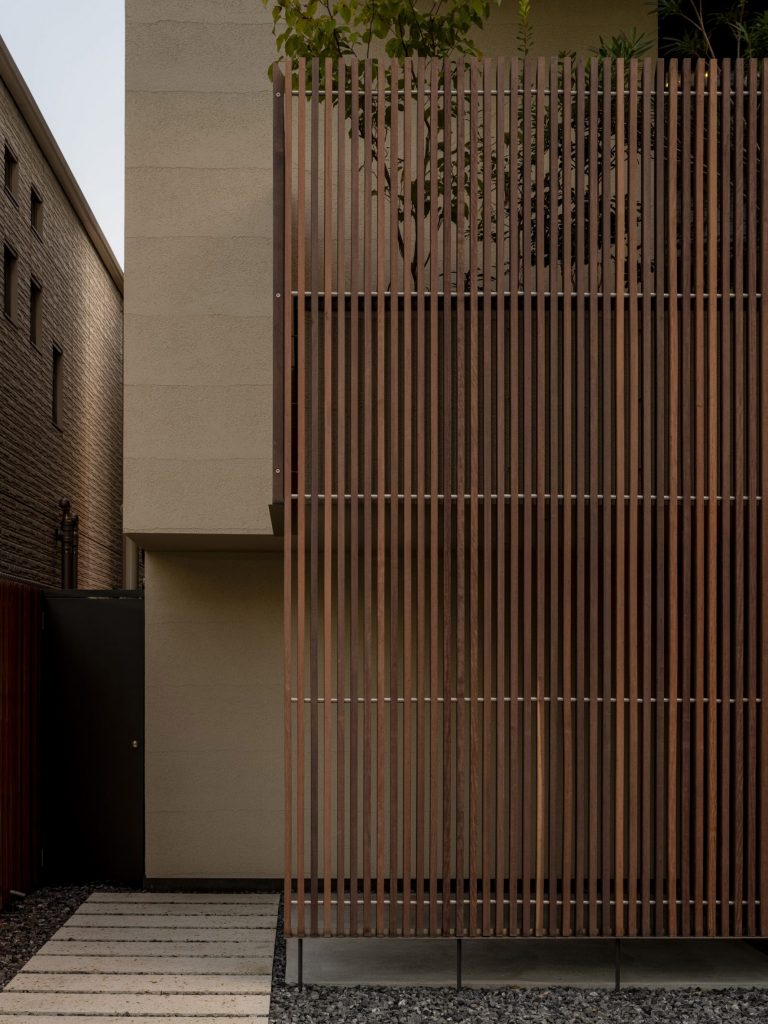
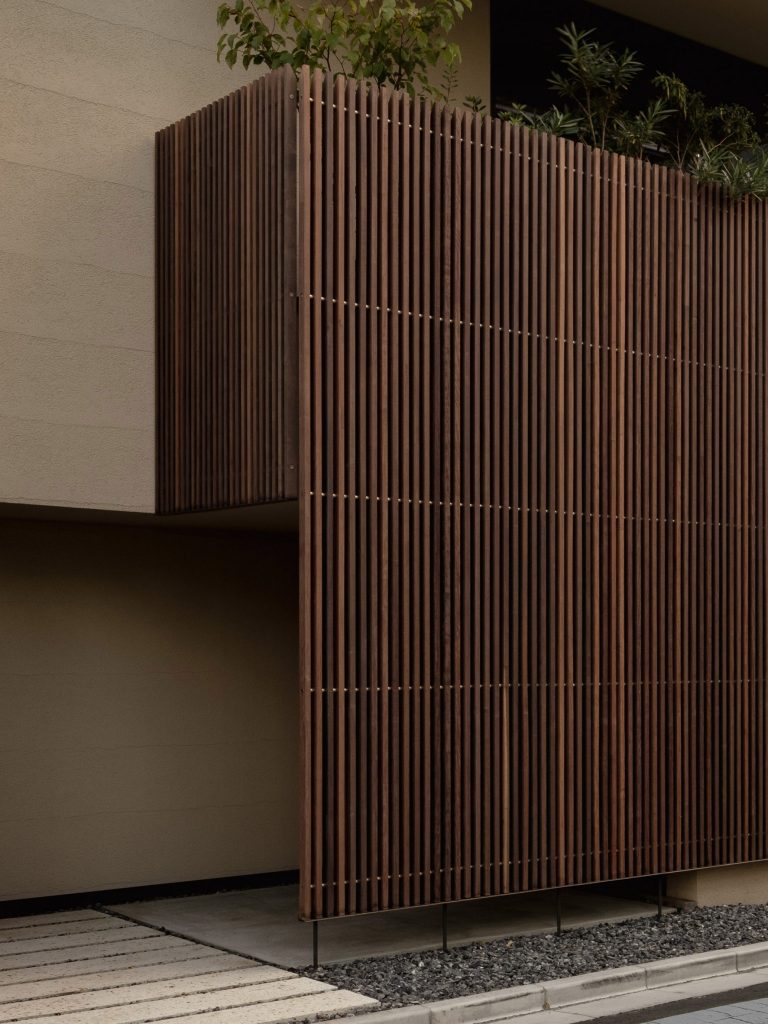
House in Aoyama by Keiji Ashizawa
According to the architect, louvres create subtle seclusion within the urban setting with a soft ambience, often seen in traditional townhouses in Kyoto. Beyond privacy, the louvres also act as delicate light filters, casting intricate patterns and creating a serene atmosphere within the home. The material selection for these louvres was equally crucial. The architect selected Itauba wood, a tropical hardwood prized for its water resistance and strength, ensuring the louvres’ longevity and delicate form.
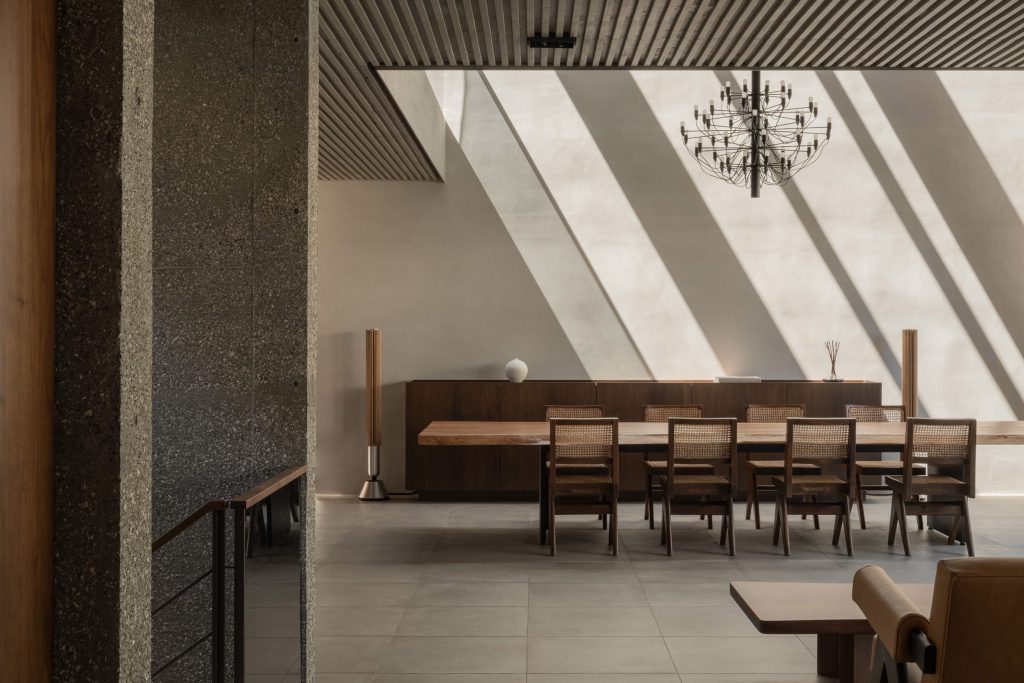
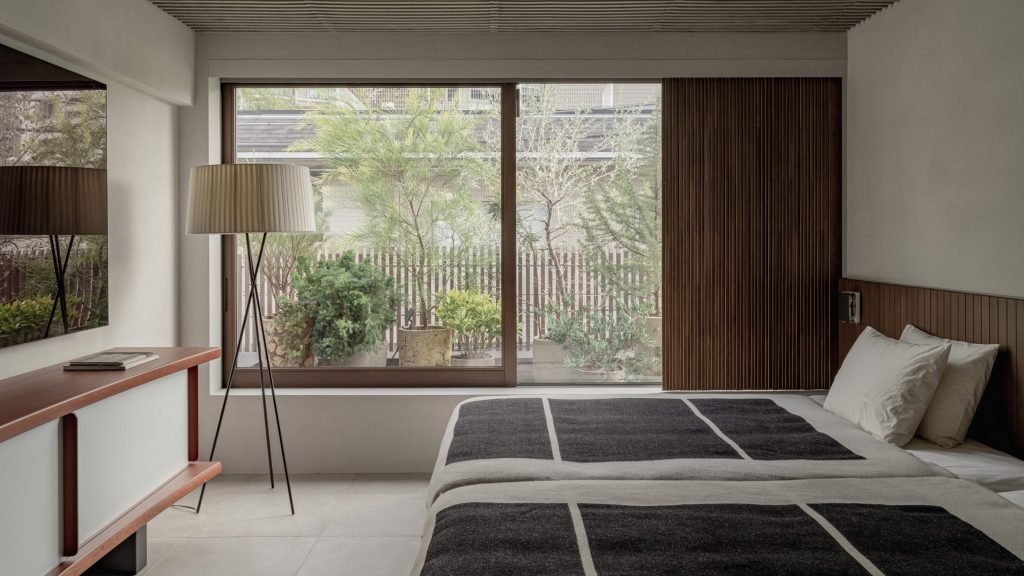
House in Aoyama by Keiji Ashizawa
Inside, the exposed concrete structure is artfully treated with different finishes, including ribbed ceilings for acoustic enhancement and water-washed concrete in transitional spaces. This careful curation of materials and textures reinforces the building’s grounding and tactile feeling. The building’s design incorporates a rooftop garden that creates an outdoor social gathering place within a dense urban setting.
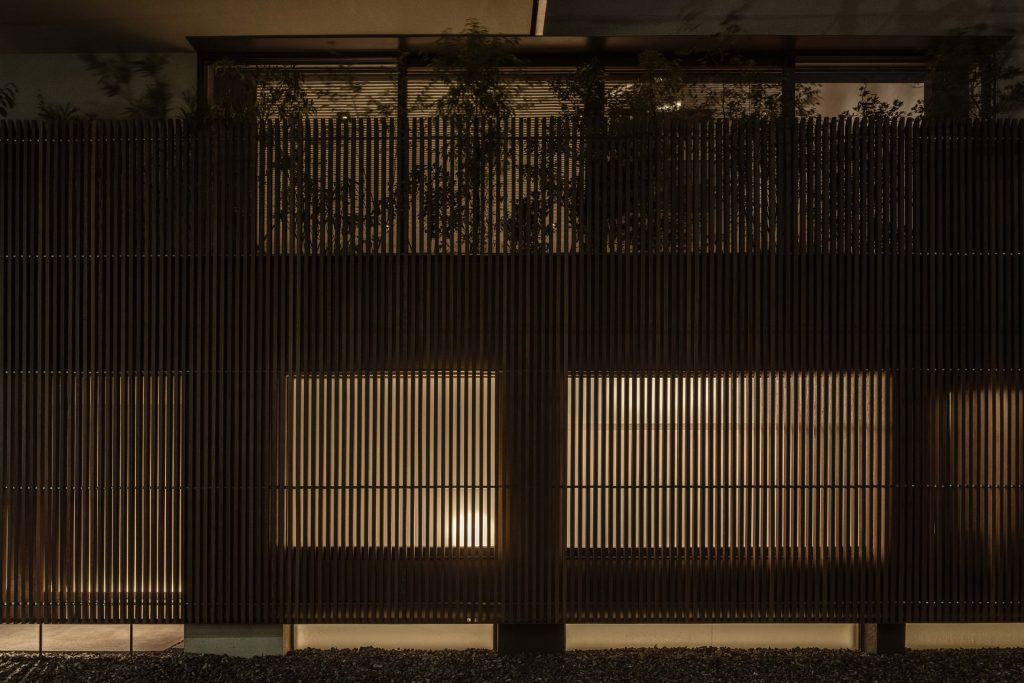
House in Aoyama by Keiji Ashizawa
The strategic integration of natural light further elevates the living experience. A skylight bathes the interior in soft, diffused light, complementing the gentle illumination filtering through the louvres. Ashizawa describes this interplay of light as “a luminous sanctuary within a bustling city,” encapsulating the essence of the House in Aoyama. The design blends modernism with a desire to create a comfortable living environment that is both engaging and relaxing.
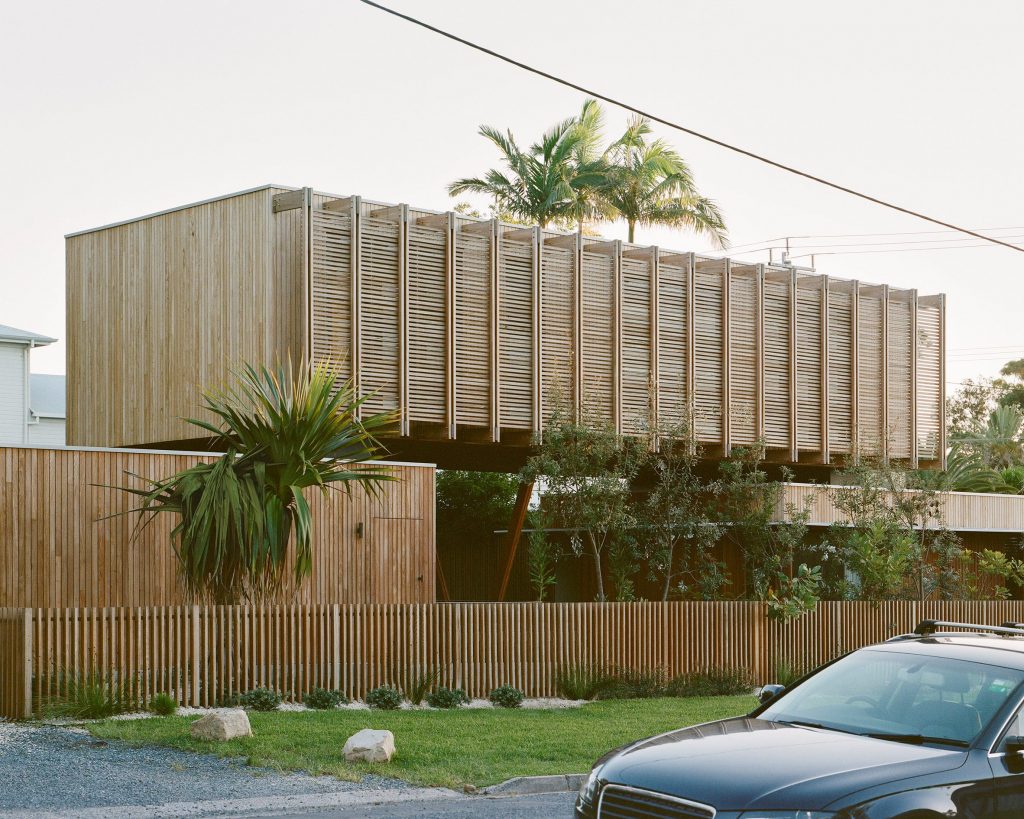
Bangalow Road House by Son Studio (also header image)
Shifting gears from the urban density of Tokyo, we journey to the sun-kissed shores of Byron Bay, Australia, where local Son Studio’s Bangalow Road House demonstrates the louvre’s capacity to blend seamlessly with coastal landscapes. In contrast to the deliberate seclusion of the House in Aoyama, the Bangalow Road House embraces a more permeable relationship with its surroundings, employing timber louvres as a dynamic filter between the private interior and the public realm. Faced with a compact corner plot and stringent design constraints, Son Studio drew inspiration from traditional wooden beach shacks, resulting in a design that feels both familiar and refreshingly modern.
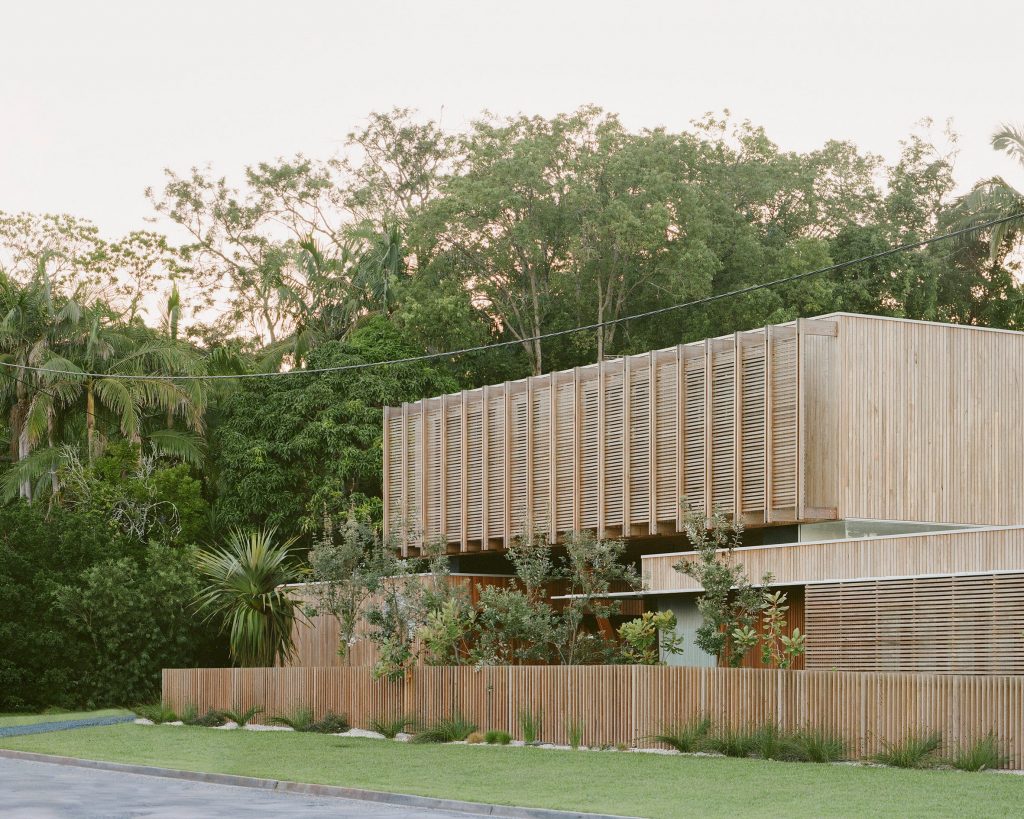
Bangalow Road House by Son Studio
The house’s design responds to the challenges of a compact site while balancing the residents’ desire for both a view and privacy. Director Scott Jackson explains that the client was interested in challenging conventional building forms and notions of how a home should look and operate to achieve their goals for this building. The house is wrapped in locally sourced timber and incorporates modern detailing, that blends the raw tactile qualities of beach houses with a modern interpretation.
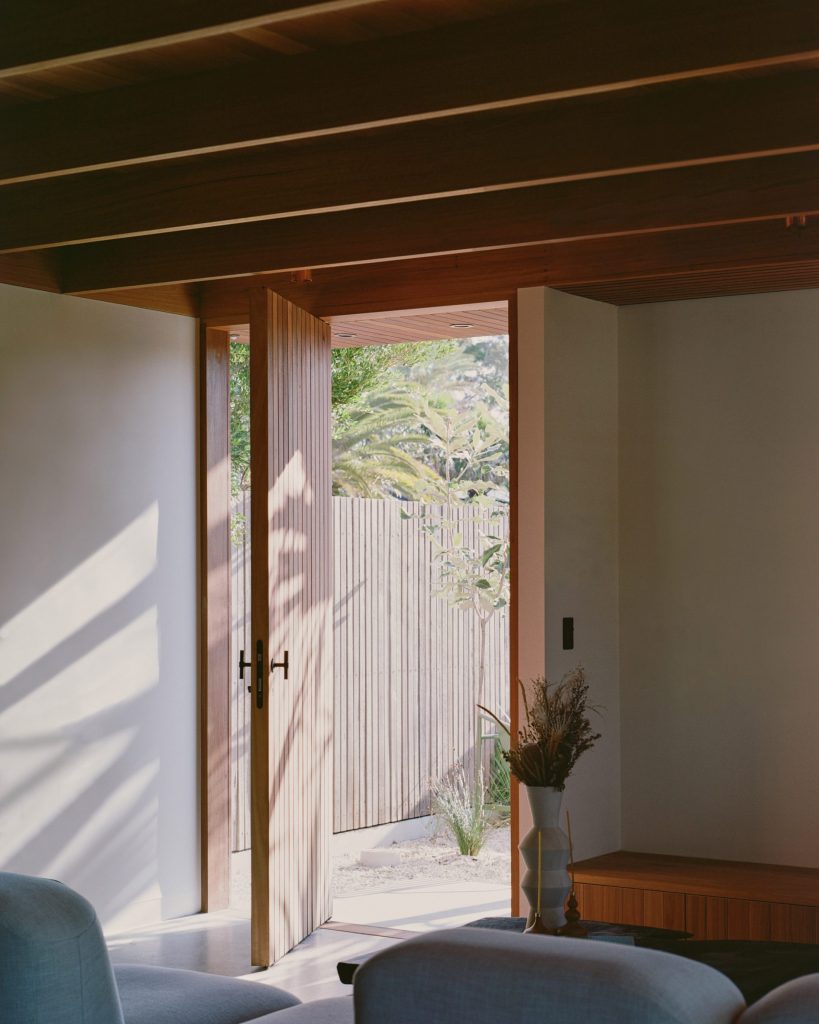
Bangalow Road House by Son Studio
The low profile of Bangalow Road House is achieved through a clever arrangement of three distinct volumes. Two sit at ground level, housing the garage and living areas, while the first-floor bedroom block is strategically perched above on diagonal wooden supports. The ground floor achieves privacy with trees and screens, the elevated bedroom volume is shielded by the timber louvres.
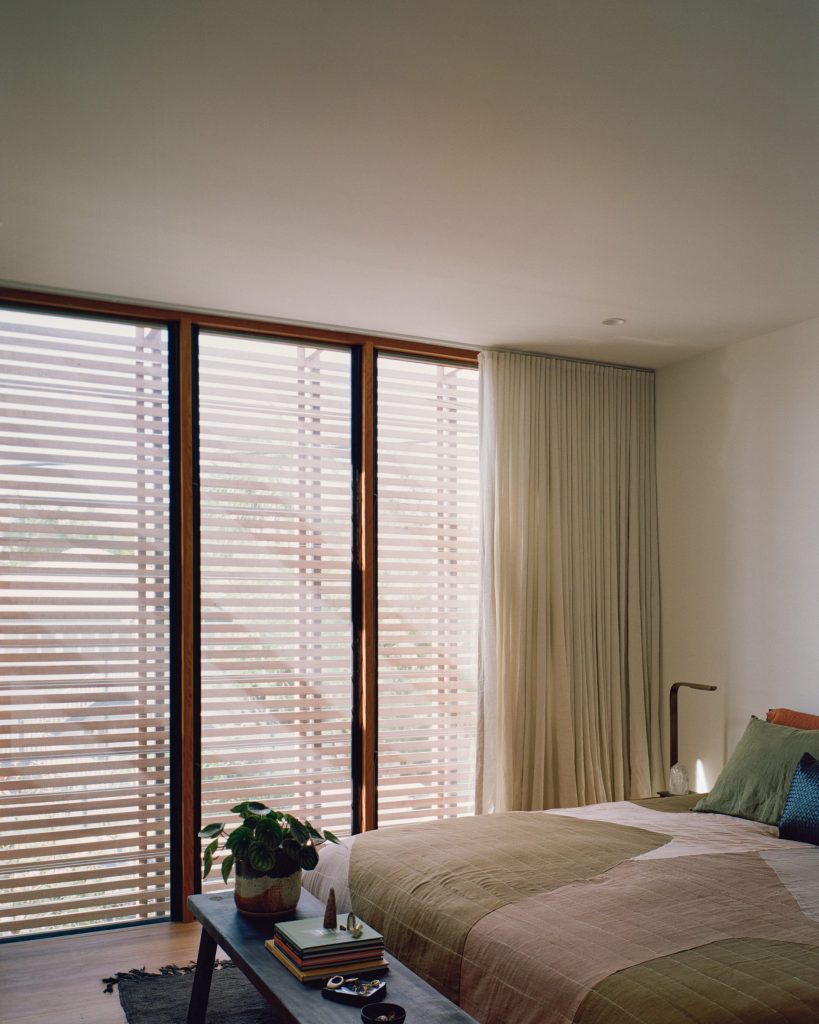
Bangalow Road House by Son Studio
It is in the elevated bedroom volume where the timber louvres truly shine, acting as a projecting screen that shields the interior from the north. Jackson describes the deliberate spacing and orientation of the louvres as creating a “fluid spatial experience” that emphasizes the changing light patterns throughout the day. These carefully curated vistas transform observation into a poetic experience of the surroundings. This spatial fluidity of outdoor/indoor living also enhances the quality of the surrounding environment and living experience.
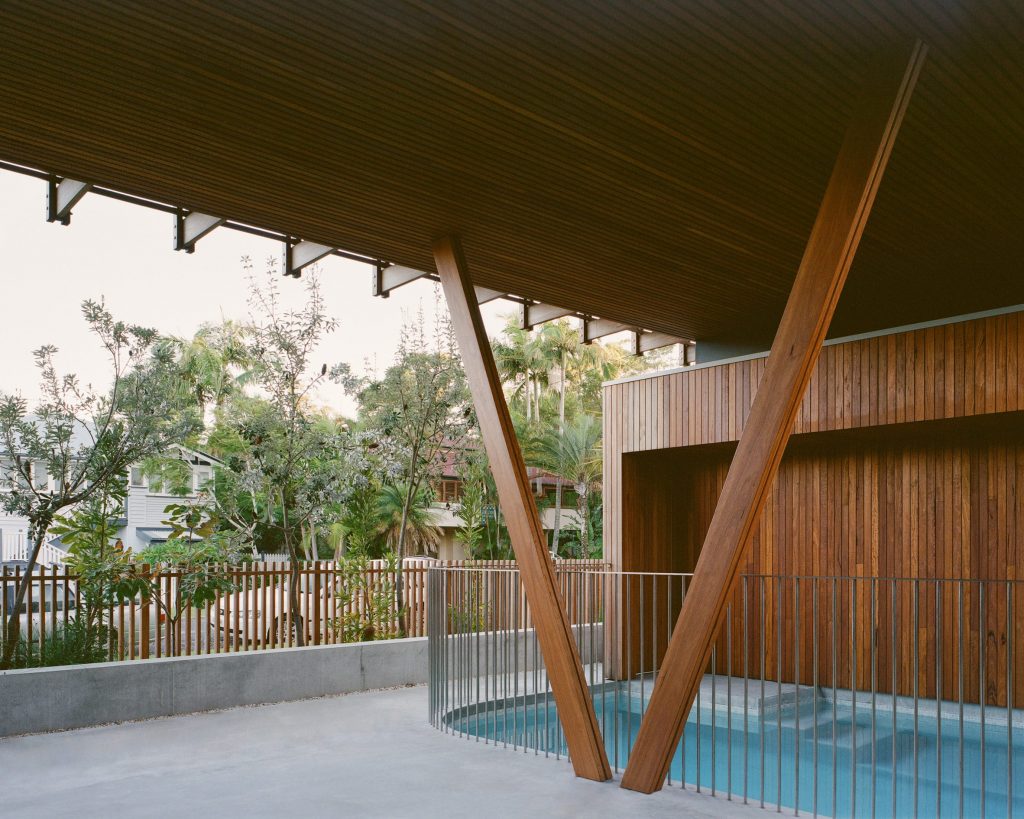
Bangalow Road House by Son Studio
Inside, exposed wooden beam ceilings and a central fireplace recall the rustic charm of traditional beach cabins, while the bedrooms offer a more minimalist aesthetic. Timber was selected to reference traditional coastal beach shacks and its adaptability that enabled the design of screening elements for the house. Bangalow Road House demonstrates the ability to simultaneously optimize its extended northern aspect while crafting intimate and protected internal spaces. The intentional use of materials and forms creates a house that is both a screen and window for those inside.
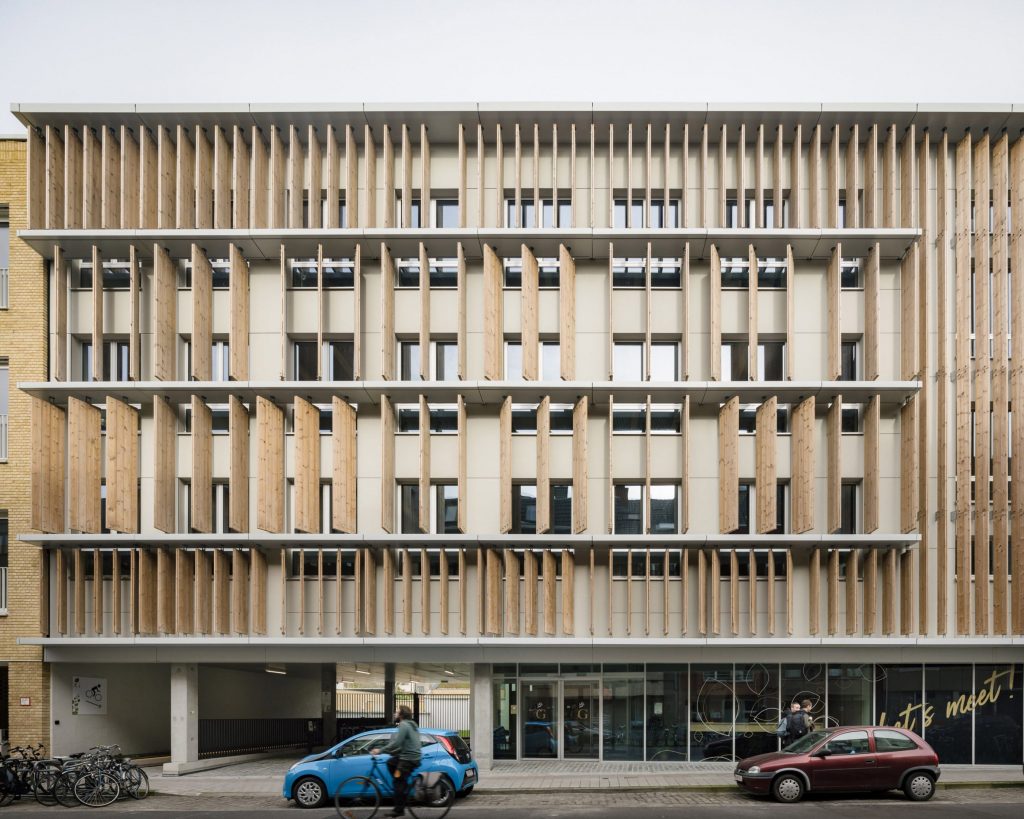
ACV-CSC-Metea office by EVR Architecten
The renovated ACV-CSC-Metea office campus in Ghent, Belgium, by EVR Architecten showcases the louvre’s potential for energy efficiency and adaptable design in larger-scale projects. Addressing the disjointed nature of the existing buildings, EVR Architecten not only unified the campus but also enhanced its connection to the surrounding neighborhood, creating a vibrant and sustainable workspace.
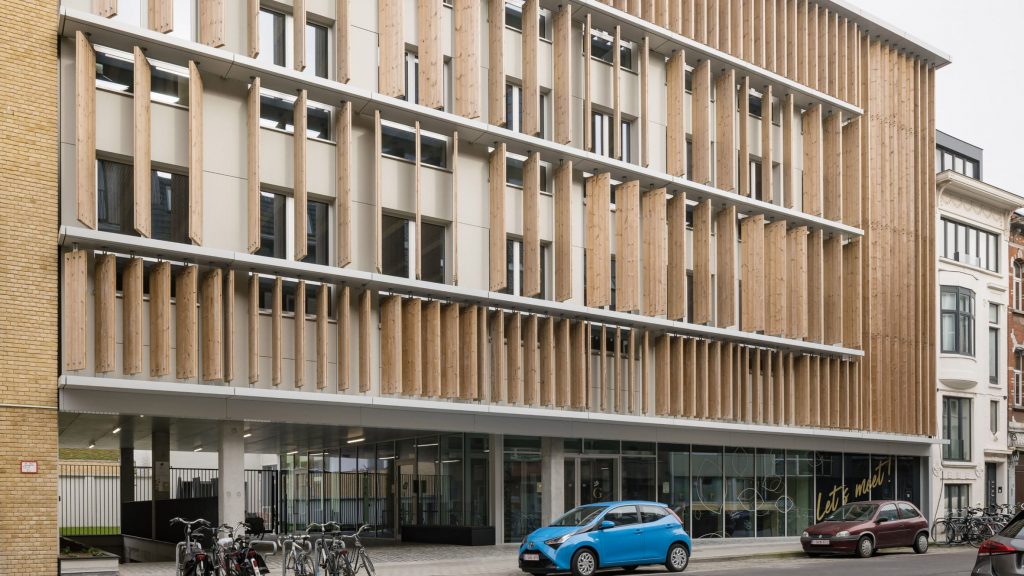
ACV-CSC-Metea office by EVR Architecten
The project architect Wart Thys explained that the project aimed to better unite the existing buildings on the campus that is home to trade union ACV-CSC-Metea. The existing buildings hardly interacted with their surroundings or each other. The firm retained as much of the original campus as possible, while replacing the main building with a new timber-framed structure that creates a front to the street.
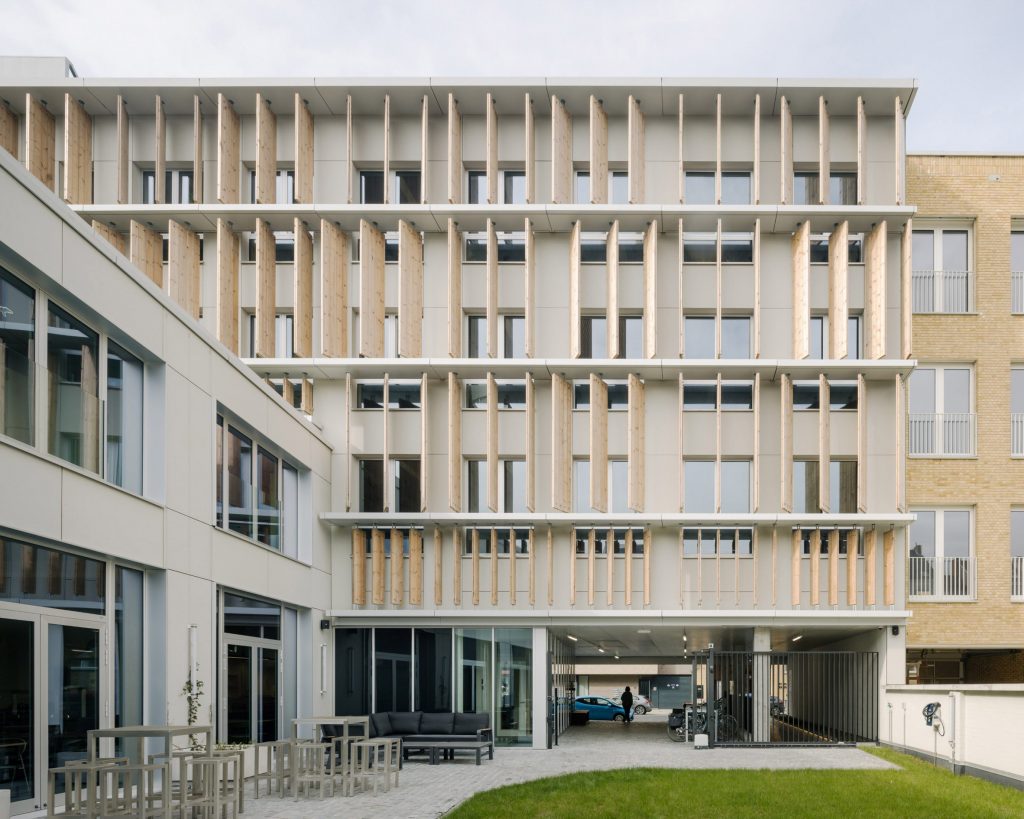
ACV-CSC-Metea office by EVR Architecten
The most striking feature of the new building is its facade of rotating wooden louvres, meticulously designed in collaboration with Bureau Bouwtechniek. A dynamic daylight and shading study informed the size and organization of these movable louvres, enabling them to respond to the sun’s position throughout the day. The vertical slats keep out the direct sunlight, while the white lacquered horizontal fins reflect light well into the offices.
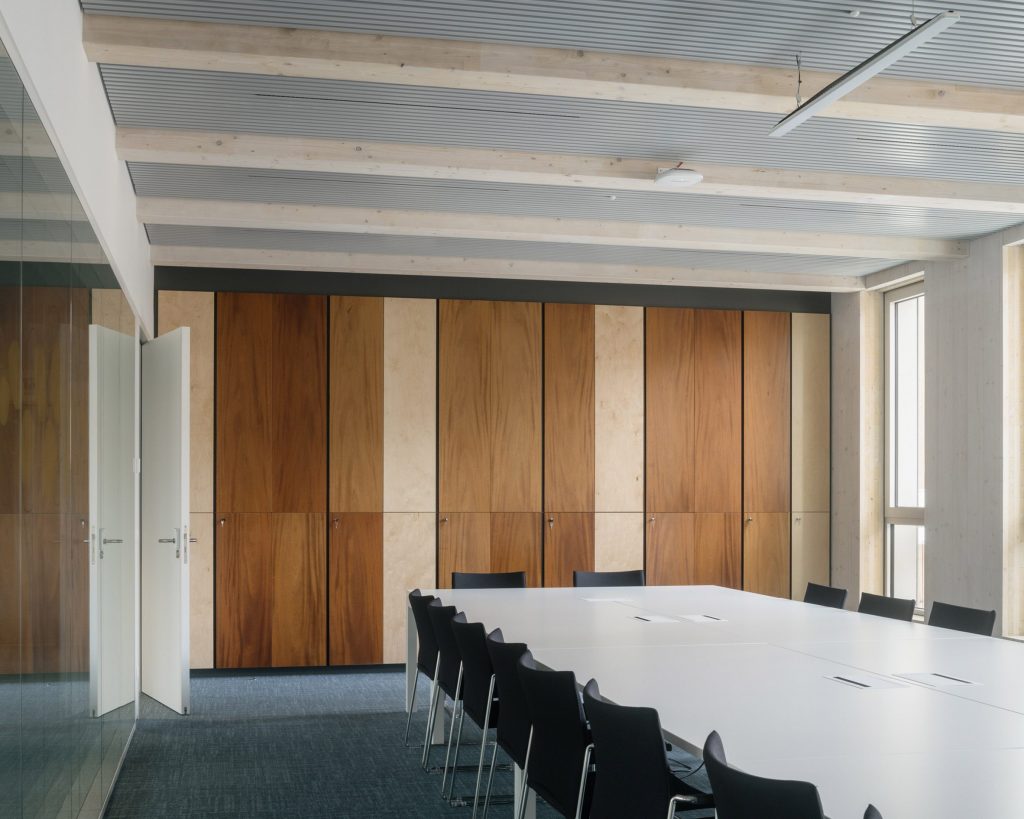
ACV-CSC-Metea office by EVR Architecten
By inclining the louvres in different directions, the strongest peaks in daylight can be leveled out through the day. This innovative shading system not only optimizes natural light but also minimizes solar heat gain, reducing the building’s energy consumption and creating a more comfortable indoor environment. The structure creates both a visual and physical link to the connection between the street and the courtyard.
Beyond its innovative facade, the ACV-CSC-Metea campus prioritizes sustainability in its construction and material choices. The upper levels of the main building feature a solid wood structure with exposed columns and beams, creating a warm and inviting interior. The open structure allows the office platforms to be dismantled and reconfigured as needed. EVR Architecten collaborated with social environmental organization Labeur VZW to reuse elements from the smaller rear volumes in the new structure. This thoughtful approach to renovation and material selection underscores the building’s commitment to environmental responsibility.